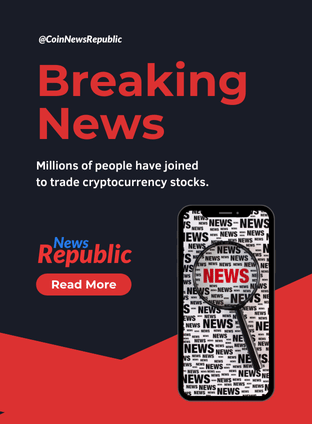As Web3 expands across hundreds of Layer 1s, Layer 2s, and app chains, the average user’s journey has grown more fragmented and complex. From Ethereum and Solana to Cosmos, Base, and zkSync, navigating the decentralized world in 2025 requires a wallet that’s fast, secure, and, most importantly, multi-chain native.
The wallets of this cycle aren’t just passive storage tools. They are full-stack crypto interfaces—handling cross-chain swaps, NFT minting, staking, bridging, identity, and even social interactions. And in a world increasingly defined by interoperability and seamless UX, the best wallets are those that can operate across ecosystems without forcing users to jump through technical hoops.
Let’s explore the most powerful and user-friendly multi-chain wallets of 2025 that are actively shaping the future of self-custody and blockchain accessibility.
1. Rabby Wallet: The Institutional-Grade Experience for DeFi Power Users
Built by the team behind DeBank, Rabby Wallet has emerged as the go-to extension wallet for DeFi professionals and active users. What sets Rabby apart is its intelligent chain detection—automatically switching networks based on the dApp you’re interacting with.
In 2025, Rabby supports over 100 chains, from Ethereum and Arbitrum to Scroll, zkSync, Mantle, and even niche L3s. It offers built-in transaction simulation, gas fee optimization, and a clean, open-source codebase that’s earned the trust of developers and institutions alike.
With the rise of modular blockchain architectures, Rabby’s auto-switching and multi-chain routing have made it a top choice for active traders who need flexibility and control.
2. OKX Wallet: The Cross-Chain Powerhouse for DeFi and NFTs
What started as an exchange wallet has evolved into a full-featured, non-custodial multi-chain wallet supporting over 80 blockchains. In 2025, OKX Wallet stands out for its built-in DEX aggregator, NFT marketplace, and cross-chain swap engine that enables seamless asset transfers across ecosystems.
It’s especially popular among mobile-first users thanks to its responsive UI and strong integration with Layer 2s and EVM-compatible chains. Users can bridge tokens, interact with DeFi protocols, and even launch token airdrops—all from within the app.
OKX Wallet also supports MPC (Multi-Party Computation) and social recovery features, making it a strong contender in the battle for mainstream adoption.
3. MetaMask: Reinventing Itself for the Modular Future
Once known as the default Ethereum wallet, MetaMask in 2025 has become a robust multi-chain interface. Thanks to its integration with Snaps—a plugin system that enables chain-specific modules—MetaMask now supports Cosmos SDK chains, Solana, Bitcoin, and even Filecoin.
Snaps has allowed MetaMask to evolve into a true universal wallet, with dApp compatibility across ecosystems and expanded functionalities like hardware wallet pairing, private RPC settings, and fiat onramps.
With MetaMask Portfolio and MetaMask Bridges now widely adopted, the wallet has also become a hub for portfolio tracking and inter-chain asset management. Despite growing competition, its strong developer network and UX upgrades have helped MetaMask retain relevance in 2025’s modular Web3 stack.
4. XDEFI Wallet: Built for Speed, Swaps, and Security
XDEFI is designed for users who frequently move across EVM and non-EVM chains like Terra, THORChain, Solana, and Bitcoin. Its multi-asset swap engine allows users to exchange tokens directly within the wallet—without needing to visit external platforms.
In 2025, XDEFI has expanded its security layer, integrating hardware wallet compatibility and auto-approval rules for high-frequency traders. It also supports real-time transaction previews and gas analytics—ideal for those trading across chains or managing large portfolios.
Thanks to its cross-chain bridging module and aggressive L2 expansion, XDEFI continues to attract users who value speed, performance, and native integrations.
5. Keplr Wallet: The Portal to Cosmos and Beyond
Keplr has long been the standard wallet for Cosmos ecosystem chains, but in 2025, it has broadened its capabilities to support interchain accounts, IBC transfers, and EVM-compatible app-chains.
With the Cosmos ecosystem maturing—through chains like Celestia, dYdX, and Noble—Keplr has become essential for navigating the expanding IBC (Inter-Blockchain Communication) protocol. Its seamless token management, staking tools, and DAO governance interface make it ideal for users active in the Cosmos universe.
Keplr’s recent collaboration with MetaMask Snaps has also enabled limited Ethereum and Arbitrum interactions, bridging the gap between Cosmos-native and EVM-native DeFi.
6. Phantom Wallet: No Longer Just for Solana
Phantom started as the dominant wallet for Solana, but in 2025, it has successfully expanded to Ethereum and Polygon. Its elegant UI, seamless NFT integration, and browser extension support have made it a favorite among creators, collectors, and casual users.
Phantom now offers multi-chain NFT galleries, cross-chain swaps via Jupiter and 0x, and real-time asset tracking. While still Solana-first, its broader support reflects a growing trend of wallets aiming to unify fragmented ecosystems under a single UX.
With mobile support, staking tools, and an integrated DEX, Phantom remains one of the best-designed wallets for everyday users who want function without friction.
What Makes a Good Multi-Chain Wallet in 2025?
In today’s multi-chain era, users expect more than just token storage. A top-tier wallet must offer:
- Chain Detection: Automatic switching to the correct network
- Bridging and Swaps: Built-in tools for cross-chain movement
- Security: Hardware support, biometric access, and MPC capabilities
- NFT Support: Gallery views, minting, and on-chain metadata
- DeFi Integration: Access to protocols, staking, and governance
- Mobile and Desktop Sync: Consistent experience across devices
While no wallet is perfect, the best options now offer multi-ecosystem access with minimal compromise—helping onboard millions of new users into DeFi, gaming, NFTs, and beyond.
Final Thoughts: Wallets as Portals to the Web3 World
The multi-chain future is here—and wallets are becoming the browsers of that universe. As new chains launch and as DeFi, gaming, and identity use cases converge, wallets are evolving into dynamic, secure, user-first command centers for the decentralized internet.
Whether you’re managing NFTs across Solana and Ethereum, bridging stablecoins between Arbitrum and Base, or staking across Cosmos and Polkadot, the wallets of 2025 are ready for it all. And as the line between wallets, dApps, and protocols continues to blur, your choice of wallet may define how—and where—you experience Web3.


